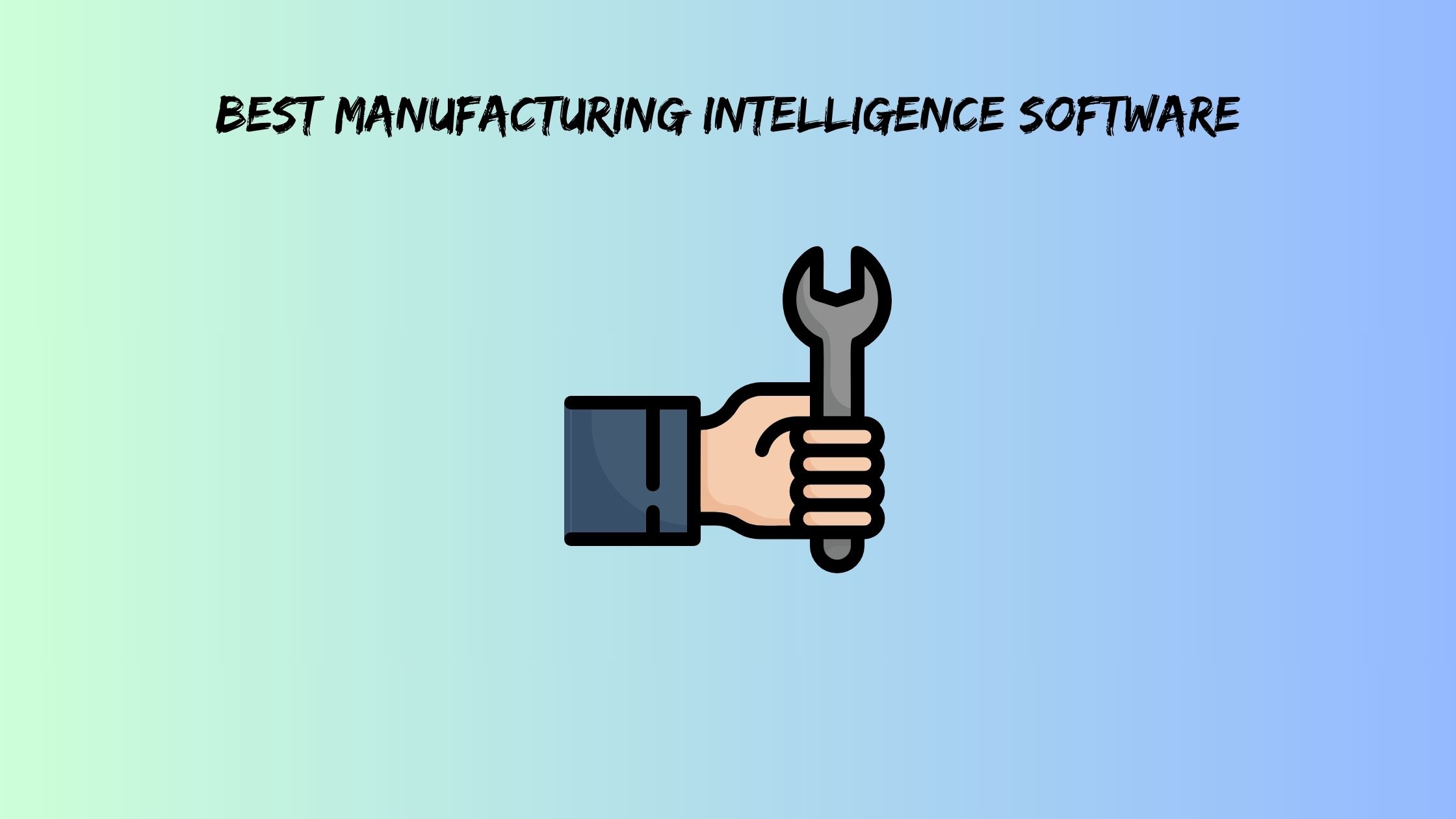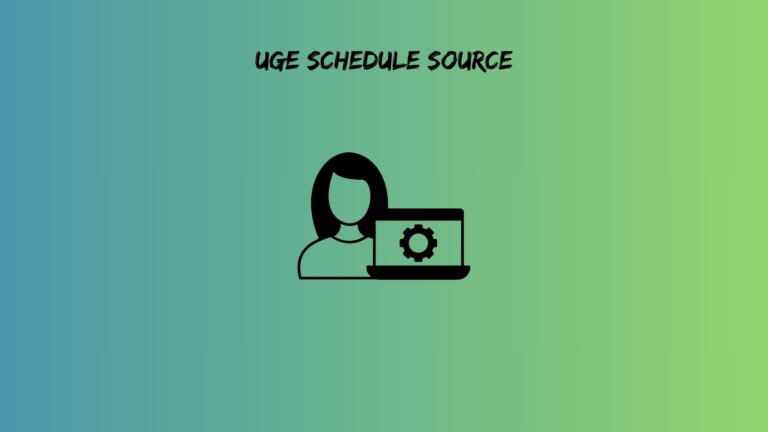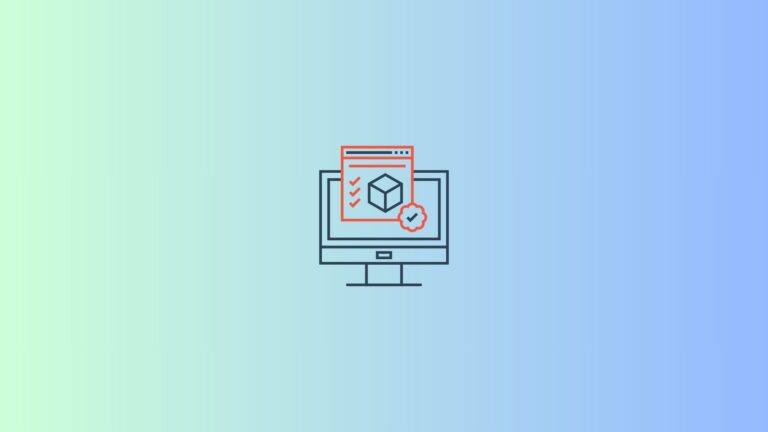Best Manufacturing Intelligence Software in 2025: Top Tools Powering Smart Factories
The factory floor isn’t what it used to be. Gone are the days when plant managers walked around with clipboards, scribbling down machine metrics and hoping for the best. Today’s manufacturing landscape demands something smarter, faster, and infinitely more precise.
Welcome to the era of manufacturing intelligence software, where data flows like water and insights pop up before problems do. If you’re still making decisions based on yesterday’s numbers, you’re already behind. The best manufacturing intelligence software doesn’t just tell you what happened; it predicts what’s coming and tells you exactly how to fix it.
This isn’t your typical business intelligence setup either. While general BI tools can crunch numbers from your sales department, they’ll fumble when faced with real-time sensor data from a production line running at 500 units per hour. Manufacturing intelligence platforms speak a different language, one fluent in OEE percentages, cycle times, and the subtle art of keeping machines happy.
Let’s explore the top 10 tools transforming factories into smart, self-optimizing operations in 2025.
What Makes Manufacturing Intelligence Different?
Here’s the thing most articles won’t tell you: manufacturing intelligence software is basically business intelligence that went to engineering school and got its hands dirty.
Regular best business intelligence tools are great for boardroom presentations. They’ll show you quarterly trends, sales forecasts, and customer segments. But drop them on a factory floor, and they’re lost. Manufacturing intelligence platforms, on the other hand, thrive in chaos. They connect directly to your PLCs, pull data from IoT sensors, integrate with MES and ERP systems, and somehow make sense of it all in real time.
These platforms track metrics that matter to production teams: Overall Equipment Effectiveness, downtime root causes, quality deviations, energy consumption per unit, and operator performance. They don’t just store historical data; they analyze patterns, spot anomalies, and alert you before a bearing failure turns into a six-hour shutdown.
The difference is simple. Business intelligence asks, “What happened last quarter?” Manufacturing intelligence asks, “Why is Line 3 running slower than usual, and how do we fix it in the next 10 minutes?”
Also read: Home Care Agency Software
Why 2025 Is Different for Factory Intelligence
Manufacturing intelligence isn’t new, but 2025 marks a turning point for three big reasons.
First, supply chains are still recovering from multiple disruptions. Companies learned the hard way that reactive management doesn’t cut it anymore. The best manufacturing intelligence software platform options now include predictive supply chain modules that flag material shortages weeks before they hit production.
Second, sustainability isn’t optional. Regulations are tightening globally, and customers want proof of environmental responsibility. Modern MI platforms track energy consumption, waste generation, and carbon emissions at machine level. Some factories are reducing energy costs by 15-20% just by optimizing run schedules based on these insights.
Third, skilled workers are harder to find. The manufacturing workforce is aging, and younger workers aren’t exactly lining up to operate machines. Intelligence platforms bridge this gap by making tribal knowledge digital. When your best operator retires, their expertise doesn’t walk out the door anymore because the system has learned from their patterns.
Add artificial intelligence to the mix, and you’ve got platforms that don’t just report problems but suggest solutions. That’s the real shift happening right now.
What to Look for Before You Buy
Shopping for the best manufacturing intelligence software provider can feel overwhelming. Here are the features that actually matter, not the marketing fluff.
Real-Time Process Visualization matters because manufacturing moves fast. If your dashboard updates every 15 minutes, you’re getting archaeology, not intelligence. Look for sub-second data refresh rates and mobile accessibility so plant managers can monitor operations from anywhere.
Advanced Analytics and AI Capabilities separate the good from the great. Basic reporting is table stakes. The question is whether the platform can predict equipment failures, identify quality trends before they become scrap, and recommend process adjustments automatically.
No-Code Configuration is critical because your engineers don’t have time to write Python scripts. The best platforms let users build dashboards, set alerts, and create calculations without calling IT. If you need a developer to add a simple KPI, the platform isn’t designed for manufacturing.
Integration Capabilities determine whether the software becomes your central nervous system or just another data silo. Check compatibility with your existing ERP, MES, SCADA, and quality management systems. The best manufacturing intelligence software tools play nicely with everyone.
Scalability Options matter more than you think. That pilot project on one line needs to expand to multiple facilities eventually. Can the platform handle it? Does pricing scale reasonably, or will costs explode when you add more data sources?
Industry Specialization is the secret sauce. Process manufacturers (chemicals, food, pharma) have different needs than discrete manufacturers (automotive, electronics). Some platforms excel in continuous processes; others shine with batch production or job shops.
The 10 Best Manufacturing Intelligence Software Platforms in 2025
1. Seeq
Best for: Process manufacturing analytics
Seeq built its reputation in industries where process data flows continuously: chemicals, oil and gas, pharmaceuticals, and food production. The platform excels at helping engineers investigate production issues through self-service analytics.
What makes Seeq stand out is how it handles time-series data. Engineers can create custom formulas, overlay process conditions, and search across months of historical data to find patterns. Think of it as a search engine for your process historian, but with the analytical power of advanced statistics built in.
The learning curve exists, but engineers love it once they’re comfortable. Integrations include most major historians (OSIsoft PI, AspenTech, Honeywell, etc.), and the cloud deployment option makes multi-site implementations straightforward.
Ideal for: Large process manufacturers with complex investigations needs and engineering teams ready to dig deep into data.
2. CADDi
Best for: Drawing-based manufacturing intelligence
CADDi takes a unique angle that most platforms ignore: engineering drawings. If your factory produces custom parts or manages hundreds of part variations, CADDi’s AI analyzes drawings to find similar components, estimate costs, and optimize supplier selection.
This isn’t traditional manufacturing intelligence, but it solves a massive headache for discrete manufacturers. The platform can search through thousands of CAD files to find that bracket design from three years ago, suggest which supplier quoted similar parts cheaply, and even predict manufacturing costs before sending RFQs.
The drawing recognition technology actually works, which is rare in the AI hype world. CADDi integrates with PLM and ERP systems to pull together design, cost, and supplier data in one place.
Ideal for: Contract manufacturers, custom fabrication shops, and companies managing large component catalogs with frequent design variations.
3. Factbird
Best for: Plug-and-play production monitoring
Factbird wins on simplicity. The platform combines hardware sensors with cloud software to get manufacturers monitoring production in hours, not months. This matters for smaller operations or companies new to digitization.
The system tracks machine states (running, idle, stopped), calculates OEE automatically, and identifies downtime causes through operator input. Dashboards are clean and focused on actionable metrics rather than overwhelming users with data.
Factbird’s approach is particularly smart for multi-line facilities. Install sensors on each line, and suddenly you can benchmark performance across operations. The mobile app lets supervisors check production status without being glued to a computer.
Trade-off: Deep customization options are limited compared to enterprise platforms, but most manufacturers don’t need that complexity anyway.
Ideal for: Small to mid-sized manufacturers wanting quick wins without massive IT projects or companies adding intelligence to legacy equipment.
4. dataPARC
Best for: Process historian visualization and management
dataPARC has been around for decades, quietly powering some of the world’s largest process plants. The platform functions as both a process historian (storing sensor data) and a visualization layer (making that data useful).
PARCview, their dashboard tool, gives operators and engineers highly customizable screens showing exactly what they need. Real-time trending, data compression that preserves detail while saving storage, and multi-site data aggregation are core strengths.
What dataPARC does better than flashier competitors is reliability. These systems run 24/7 in harsh industrial environments without hiccups. The platform connects to virtually any control system and can consolidate data from plants running completely different automation hardware.
The interface isn’t winning design awards, but engineers care more about functionality than aesthetics. Calculation engine capabilities let users create complex KPIs without programming.
Ideal for: Large process manufacturers needing rock-solid historian capabilities with powerful visualization options across multiple facilities.
5. aPriori
Best for: Design-for-manufacturability cost intelligence
aPriori solves the “why does this part cost so much?” problem before production starts. The platform simulates manufacturing processes digitally, estimating costs based on design geometry, materials, and production methods.
This is intelligence for the front end of manufacturing. Upload a CAD model, and aPriori’s simulation engine analyzes how it would be machined, molded, stamped, or assembled. The platform identifies cost drivers, suggests design modifications to reduce expense, and provides should-cost estimates for supplier negotiations.
For companies launching new products frequently, aPriori prevents expensive mistakes. Discovering that a small design tweak saves $2 per unit across a million-unit production run pays for the software quickly.
Integration with PLM systems (Teamcenter, Windchill, ENOVIA) keeps cost intelligence flowing through the product development process. The platform maintains libraries of manufacturing processes, materials, and labor rates globally.
Ideal for: OEMs and product companies focused on cost optimization during design phases, particularly in automotive, aerospace, and industrial equipment.
6. Amper
Best for: Machine monitoring for job shops and discrete manufacturers
Amper keeps things refreshingly straightforward. Attach a sensor to your machine, and within minutes you’re tracking uptime, cycle times, and production counts. No IT degree required.
The platform targets smaller discrete manufacturers who need answers to basic questions: Is the machine running? How many parts did we make? Why did we stop? Amper’s interface focuses on these fundamentals without drowning users in complexity.
Operator tablets let workers log downtime reasons with a few taps. Supervisors get text alerts when machines stay idle too long. Simple reports show which jobs ran efficiently and which ones didn’t.
Pricing is transparent and affordable for smaller shops, which matters when competing against platforms that require six-figure investments. The cloud-based system means no servers to maintain.
Limitation: Advanced analytics and custom integrations are minimal compared to enterprise best manufacturing intelligence software tools, but that’s intentional. Amper solves one problem really well.
Ideal for: Job shops, small discrete manufacturers, and companies taking their first steps into production monitoring without overwhelming their teams.
7. TrendMiner
Best for: Self-service industrial analytics with pattern recognition
TrendMiner puts serious analytical power in the hands of process engineers without requiring data science degrees. The platform’s fingerprinting technology is its secret weapon, letting users search for similar process conditions across historical data.
Here’s why that matters. When a batch fails quality tests, engineers can find other times the process looked similar and investigate what went wrong. Or when production runs exceptionally well, they can identify those “golden batches” and understand what conditions made them successful.
The collaboration features stand out too. Engineers can share investigations, build process knowledge libraries, and ensure insights don’t stay locked in individual heads. Predictive modeling tools help forecast quality deviations before they occur.
TrendMiner works with major process historians and supports both cloud and on-premise deployments. The interface feels modern compared to older industrial software, which helps with user adoption.
Ideal for: Process industries (chemicals, pharma, food) where understanding process variability and predicting quality issues deliver significant value.
8. LeanDNA
Best for: Supply chain and inventory intelligence for manufacturers
LeanDNA tackles the supply chain chaos that keeps planners up at night. While most manufacturing intelligence focuses on production, LeanDNA analyzes inventory, supplier performance, and material flow.
The platform connects to ERP systems and enhances their data with predictive analytics. It identifies which material shortages will actually impact production (versus the false alarms ERPs generate constantly), scores supplier reliability, and recommends optimal inventory levels by component.
For manufacturers dealing with hundreds of suppliers and thousands of components, LeanDNA cuts through the noise. The platform prioritizes issues by revenue impact, so teams focus on problems that matter rather than chasing every minor shortage.
Collaboration tools let procurement, planning, and production teams work from the same information. When everyone sees the same material risks, finger-pointing decreases and problem-solving accelerates.
Ideal for: Mid to large manufacturers with complex supply chains, particularly in electronics, industrial equipment, and automotive sectors where component availability determines production schedules.
9. Fulcrum
Best for: Mobile-first quality and compliance intelligence
Fulcrum takes manufacturing intelligence mobile. The platform digitizes inspections, audits, and quality workflows using tablets and smartphones. Think of it as replacing paper checklists with smart digital forms that feed central analytics.
Quality inspectors walk the floor with tablets, completing checks that automatically timestamp, geolocate, and photo-document findings. The data flows immediately to dashboards, triggering alerts when issues arise and creating audit trails for compliance.
Offline capability is crucial here. Factory WiFi can be spotty, so inspectors can complete forms without connectivity and sync later. Custom workflow logic ensures the right checks happen at the right times.
Beyond quality, manufacturers use Fulcrum for equipment inspections, safety audits, maintenance checklists, and training verification. The flexibility to build custom forms without coding makes it adaptable to various use cases.
Integration with other systems (ERP, quality management software) keeps data flowing rather than creating another silo.
Ideal for: Manufacturers with distributed quality processes, companies in regulated industries needing strong compliance documentation, and operations where mobile data collection improves accuracy over paper.
10. Azumuta
Best for: Connected worker intelligence and digital work instructions
Azumuta focuses on the human side of manufacturing intelligence. The platform combines digital work instructions, skills management, quality checks, and training in one connected system.
Operators access step-by-step work instructions on shop floor screens or tablets, complete with photos, videos, and automatically logged completion. The system tracks who’s certified for which tasks, manages training schedules, and ensures only qualified workers handle critical operations.
The skills matrix functionality helps supervisors make smart staffing decisions. When someone calls in sick, the platform shows who else can run that process. Training gaps become visible, so workforce development gets targeted where it matters most.
Quality checkpoints embedded in work instructions ensure consistency. When an operator completes a critical step, the system prompts for verification before allowing progression. This reduces defects caused by skipped steps or incorrect sequences.
Azumuta works well for manufacturers battling workforce challenges, particularly those with high turnover, complex processes, or strict quality requirements.
Ideal for: Assembly operations, regulated industries (medical devices, pharma), and manufacturers modernizing training and knowledge management to reduce dependence on veteran workers.
Also read: Best Livestock Management Software
How to Actually Pick the Right Platform
Most buying guides offer generic advice. Let’s get specific with a three-step framework that works.
Step 1: Map Your Digital Maturity
Be honest about where you are. If you’re still collecting data on paper, jumping to advanced AI-powered platforms is like buying a Formula 1 car when you just got your driver’s license. Start with systems that digitize basics (Factbird, Amper) and graduate to sophisticated analytics (Seeq, TrendMiner) as your team builds capability.
Mid-maturity companies with some digital infrastructure but fragmented systems benefit from platforms with strong integration capabilities (dataPARC, LeanDNA). Advanced operations ready for predictive intelligence should evaluate AI-focused options.
Step 2: Identify Your Primary Pain Point
Don’t try to solve everything at once. Pick your biggest headache.
Quality issues killing margins? Look at platforms with strong pattern recognition and predictive quality features (TrendMiner, Fulcrum). Downtime eating productivity? Prioritize real-time monitoring and predictive maintenance (Seeq, Factbird). Supply chain chaos? Focus there first (LeanDNA). Design costs out of control? Start upstream (aPriori, CADDi).
The best manufacturing intelligence software platform for your neighbor might be wrong for you because your problems differ. Vendor demos should focus on your specific use case, not generic capabilities.
Step 3: Pilot Before You Scale
Every vendor claims easy implementation. Test that claim on one line or one facility before committing enterprise-wide. A good pilot proves ROI, identifies integration challenges, and builds user confidence.
Set measurable goals: reduce downtime by X%, improve OEE by Y%, or cut quality defects by Z%. Track these metrics ruthlessly. If a platform can’t deliver value in a pilot, it won’t magically work at scale.
Consider whether you need an all-in-one best manufacturing intelligence software platform versus connecting specialized best manufacturing intelligence software tools. Some companies succeed with integrated suites; others prefer best-of-breed point solutions. Neither approach is universally superior.
Evaluate vendor support quality during pilots. When things break at 2 AM (and they will), responsiveness matters more than fancy features. Check references specifically about support experiences, not just feature satisfaction.
What’s Coming Next in Manufacturing Intelligence
The manufacturing intelligence landscape continues evolving rapidly. Several trends will reshape best manufacturing intelligence software provider offerings over the next few years.
Generative AI is moving beyond hype into practical applications. Instead of just flagging anomalies, future platforms will explain root causes in plain language and suggest specific corrective actions. Imagine asking, “Why is our yield down this week?” and getting a detailed analysis with recommended process adjustments in seconds.
Digital twin integration is becoming standard rather than exotic. When physical and virtual models sync continuously, manufacturers can test process changes digitally before risking actual production. The best platforms will seamlessly connect intelligence layers with simulation capabilities.
Edge computing solves the real-time processing challenge. Rather than sending all data to the cloud for analysis, intelligence moves closer to machines. This enables sub-second decision-making for critical processes where latency matters.
Sustainability dashboards are transitioning from nice-to-have to essential. Future platforms will track Scope 1, 2, and 3 emissions at granular levels, helping manufacturers prove environmental claims with data rather than estimates. Energy optimization will be a standard module, not an add-on.
Natural language interfaces will democratize access to insights. Instead of learning complex query languages, workers will simply ask questions conversationally. This breaks down barriers between data and decisions.
Cross-facility benchmarking networks are emerging where manufacturers can compare performance against peers anonymously. This crowdsourced intelligence helps companies understand whether their performance issues are unique or industry-wide.
Also read: Top Property Management Software Tools
Making Smart Decisions About Smart Factories
Choosing the best manufacturing intelligence software comes down to matching capabilities with your specific operational reality. The fanciest platform means nothing if your team won’t use it or if it doesn’t address your actual problems.
Start by understanding what keeps your operations team awake at night. Is it unexpected downtime? Quality escapes? Supply chain unpredictability? Material waste? Each problem points toward different platform strengths.
Remember that the best manufacturing intelligence software provider for your facility might not be the biggest name or the one with the longest feature list. Success depends on implementation quality, user adoption, and genuine value delivery, not marketing promises.
The real competitive advantage in 2025 doesn’t come from having intelligence software; it comes from using it effectively. Pilots reveal what works. Training ensures adoption. Continuous improvement maximizes value. Technology enables transformation, but people drive it.
Your manufacturing intelligence journey probably starts with one problem, one line, and one small team. That’s perfect. Solve that problem well, prove the value, and build from there. Smart factories aren’t built overnight; they evolve through deliberate, focused steps.
The question isn’t whether to adopt manufacturing intelligence anymore. That ship sailed. The question is which path fits your operation, your team, and your goals. Take the time to answer that honestly, and you’ll make a choice that transforms operations rather than just adding another dashboard nobody checks.
Frequently Asked Questions
What’s the difference between manufacturing intelligence software and MES systems?
Manufacturing Execution Systems (MES) focus on managing and controlling production processes in real time. They handle work orders, track materials, schedule operations, and ensure products follow the right steps. Manufacturing intelligence software analyzes the data MES and other systems generate to find patterns, predict problems, and optimize performance.
How long does it typically take to see ROI from manufacturing intelligence software?
Implementation timelines and ROI vary widely based on platform complexity and organizational readiness. Simple monitoring solutions like Factbird or Amper can deliver measurable improvements within weeks by simply making downtime visible and actionable. More sophisticated analytics platforms like Seeq or TrendMiner typically show initial ROI within 3-6 months as teams learn to investigate and resolve chronic issues. The key factor isn’t the software but how quickly your organization acts on insights.
Can small manufacturers with limited budgets benefit from manufacturing intelligence software?
Absolutely, and in some ways small manufacturers benefit more because intelligence reveals inefficiencies that manual tracking misses. Affordable options like Amper, Factbird, and certain configurations of Fulcrum cost less than adding a single employee but deliver visibility across entire operations. Start with basic monitoring on your biggest bottleneck machine or highest-value production line. Even simple uptime tracking and downtime reason coding typically uncover improvement opportunities worth multiples of software costs.







